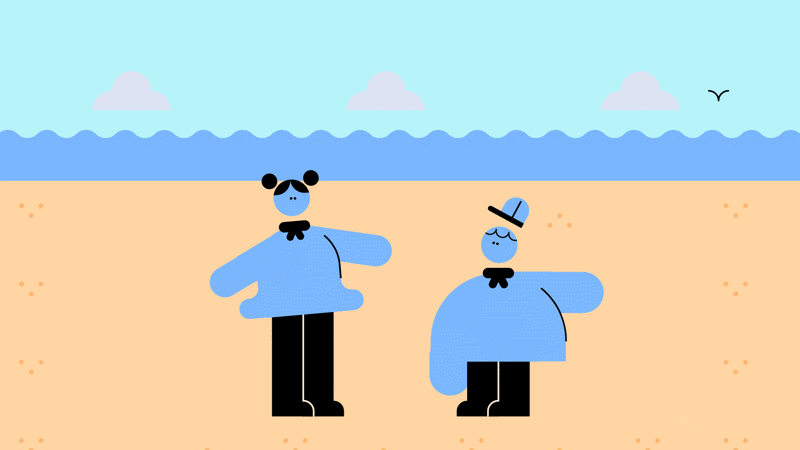You’ll need
- Pens or pencils
- Clipboards
Planning and setting up this activity
- Involve the group in deciding where to go. They may be eager to visit a specific place.
- Always do a risk assessment, and invite parents and carers (and Young Leaders) to come with you.
- Decide as a group where around the coast you’d like to explore, and the features everyone would like to include.
- Plan a route that includes a variety of areas such as shoreline, the built environment and features, such as dunes and cliffs.
Running this activity
- Gather everyone together and explain you’ll be doing a scavenger hunt on the beach. Everyone will have the same amount of time, and they’ve got to go round in groups and find as many items as possible.
- There’s two types of bingo sheets:
- A scavenger hunt with pictures, which may be suitable for younger groups.
- An A-Z list, which may be suitable for older groups.
- Everyone should split into groups of three or four and an adult should join each group.
- Give each group a copy of the bingo sheets you’re using, a pen or pencil and something else to lean on, such as a clipboard.
- Before they set off, each group should talk about the kinds of things they may find for each letter, and where they may find them.
- The group should set off on the walk, working together to spot an item beginning with each letter of the alphabet. When they spot an item, they should jot it down, along with where they found it. Each group should explore all around, looking high, low, under, and behind things.
- For the alphabet sheets, some letters will be easier than others. Groups may have to be creative with letters like x or z. You may allow them to look for something clever (such as a stretch of beach with ‘zero litter’) or a word containing x (such as taxi or box). Groups could give each other clues, for example, telling another group to ‘look in that rockpool for something beginning with c’ if they’ve spotted a crab.
- Each group can go their separate ways as long as everyone is in sight of each other and each group stays with their adult.
- Each group should meet back at an arranged place at an arranged time, then share how many items or letters they found with the other groups.
- People could get a point for each item they’ve found. For the alphabet sheets, if no-one else used the same item for a letter, the team could have an extra point.
Reflection
This activity was all about trying new things, as everyone explored an area in a different way. For some people, the seaside may have been a familiar area. Did anyone know the place well, or was it new to everyone? Even if people knew the area, they probably haven’t explored it like this before.
Everyone should talk about the things they found; people could focus on a certain letter. Did all of the groups find the same things, or did some groups find different things? Did people notice things they may not usually have found? Each group should share the most unusual or interesting thing they found. When people look closely, even familiar places can hold surprises and new treasures.
This activity was also about being a team player. How did each group work through the list together? Some people may have worked through the list in order, while others may have found the items first, then filled in the list. Did any of the teams disagree about decisions, such as which way to go? What did teams do if people disagreed?
Safety
All activities must be safely managed. You must complete a thorough risk assessment and take appropriate steps to reduce risk. Use the safety checklist to help you plan and risk assess your activity. Always get approval for the activity, and have suitable supervision and an InTouch process.
- Outdoor activities
You must have permission to use the location. Always check the weather forecast, and inform parents and carers of any change in venue.
- Hiking and walking
Follow the guidance for activities in Terrain Zero, or the guidance for each the adventurous activity.
- Near water
Manage groups carefully when near water. The guidance on activities near water will help you to keep your group safe.
- Make sure the route is accessible for everyone.
- Instead of writing, you could also let people take pictures.
All Scout activities should be inclusive and accessible.
One person could lead their group as part of their Teamwork Challenge Award.


